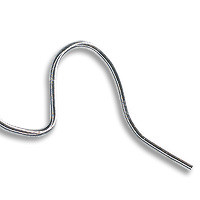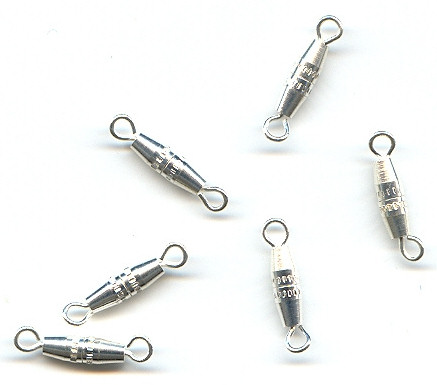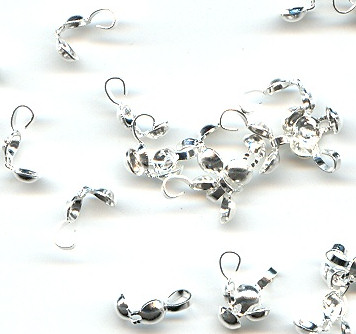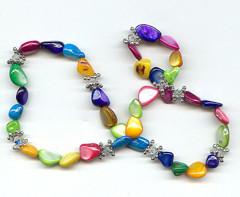All about stringing
The oldest method of wearing beaded jewellery is to string the beads together. Many different types of thread can be used, but some of most common ones are silk thread, cotton thread, nylon, and nylon coated wire. Necklaces strung on coated wire based threads are stiffer and do not drape as well as those strung on silk or nylon, so you really need to think about your necklace or bracelet design before you choose your thread.
[Hidepost=1]
Nylon coated steel wire is often referred to as tiger tail and is relatively stiff and can kink easily which can interfere with the drape of your design. There are alternative brands of wire on the market these days like soft flex products, which allow you to have the strength of wire but with a flexible drape. The new flexible beading wires have many strands of tiny micro stainless steel. Choose between 7 to 49 strands and get the best quality that you can afford for projects which involved beads that you want to last. Generally you should choose the largest size of wire that you can comfortable fit through the bead hole. You should allow for some movement of the beads.
Nylon monofilament thread is an alternative to the coated wire and has the advantage of being nearly clear and is great for creating illusion or floating style necklaces, where beads placed upon the necklace appear to float. You should bear in mind that nylon monofilament thread can become brittle and yellow with age so it is best used for costume jewellery.
Once you have strung your design you will of course need to finish off the ends. There are many methods you can use to do this. One easy method is to use a bolt ring and tag, torpedo clasp or barrel clasp and simply tie off the ends of the necklace. Another and possibly neater method is to use callotes also known as clam shells, knot cups and bead tips. These small findings allow you to hide the knot end of your necklace and attach it to a nicer looking clasp.
When using tiger tails or a soft flex equivalent, you should use crimps to secure a loop at each end of your necklace and then attach the loop to jump rings and the clasp of your choice. You can use flat nose pliers to crimp your bead into place or some people prefer to use crimping pliers which fold the crimp to make a smaller neater finish. It really is a matter of preference.
One of the things that you will have to judge is the tension required on your necklace design before you crimp the second end into place. For a necklace to drape nicely it, will require a certain degree of movement. So when you crimp the second end of your necklace it is a good idea to bend the necklace into a semi circle as if it were lying around the neck, so that you obtain the right tension. Recently wire guards have been developed for sale in the jewellery making market, and these are like little horseshoe shaped guards to be fitted either end of your necklace to give you a uniform shape.
Another finding product used in finishing off necklaces to give them neater appearance is French wire also know as French coils, gimp or bullion. This product is designed to hide the exposed threading material and also protect it from wear and tear.

French Wire

Softflex Beading Wire

Torpedo Clasp

Boltring and Tag

Callottes
[/Hidepost]



 Click
Click